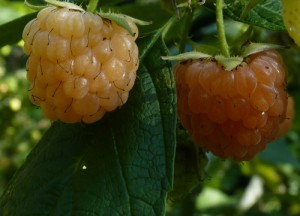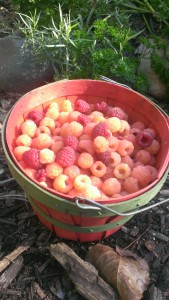Lughnasa (last day of 2014) College Moon
 The raspberry plant. Source of the brambles, an imperial sort of plant that colonizes, then absorbs patches of land. Just realized today what an elegant form of evolutionary engineering it is.
The raspberry plant. Source of the brambles, an imperial sort of plant that colonizes, then absorbs patches of land. Just realized today what an elegant form of evolutionary engineering it is.
In the spring it shoots up from last year’s cane or from seed. Then it grows up and up toward the sun, its spiny stalk with its thick, bark-like cover strong. During the summer months it spreads out its leaves, increases the size of its stalk, sinks its roots deeper into the soil. As the growing season begins to dwindle, it throws out small blossoms on thin, spindly branches. The resulting fruit at first weighs down the spindly branches just a bit, the whole still upright, able to drink in the sun.
As the fruit matures, however, it gains water weight and the spindly branches begin to  bend toward the ground, overwhelmed by the cumulative mass of the maturing fruit. Once a large number of fruits are ripe, the weight of the whole may bend the tip and even the thinner part of the upper stalk toward the ground.
bend toward the ground, overwhelmed by the cumulative mass of the maturing fruit. Once a large number of fruits are ripe, the weight of the whole may bend the tip and even the thinner part of the upper stalk toward the ground.
Think of it. At each stage of its presence during the growing season the raspberry has an optimal design. Firm and upright early to catch the sun, to get it above neighboring vegetation. As the fruits turn their soft golds or their beautiful magenta, the raspberry’s fruits gradually lower themselves so the seeds, which they exist to nourish, get closer to the ground. If a bird or animal doesn’t grab them for the taste of the fruit, they simply drop off and fruit and seed start more raspberry plants right there.
Picking raspberries in the cool of a sunny fall afternoon, the air sweet with the scent of snakeroot blooming nearby, the dogs waiting at the fence for fruits thrown over. Enough. That’s all. Enough.
